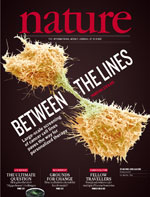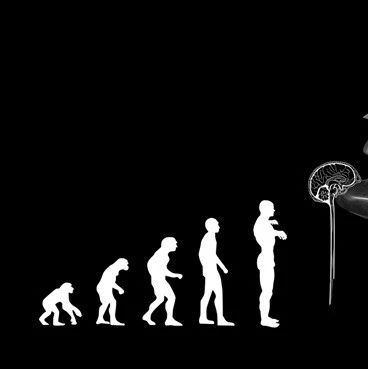导读:据《新科学家》网站近日报道,早在20世纪40年代,神经学家怀尔德·潘菲尔德就发现,病患能够在大脑不同区域受到电击刺激时,回忆起饼干气味等看似随意的信息。近期进行的两项研究已找到了支持这一记忆储存理论的证据,相关研究报告发表在最新出版的《科学》杂志和《自然》杂志网络版上。其中一项基于转基因小鼠的研究,甚至能证明或可操控大脑细胞,以产生错误的记忆。

加州斯克利普斯研究院的马克·梅福德及其同事对小鼠进行了转基因处理,使它们的神经元能够在大脑注入hM3Dq DREADD受体时,被再次触发。这种受体可由专门的药物所激活。
研究团队将小鼠单独放在盒子中,每个盒子接触到的颜色和气味都不同,这将刺激神经元形成有关上述条件的记忆。由于神经元会在记忆形成时激发,同时能在药物注入时被重新激活,这使研究人员能够无意识地诱导小鼠产生和盒子有关的记忆。随后,他们将每只老鼠放入具有不同颜色和气味的第二个盒子之中,并为其注入药物,使老鼠记住第一个盒子,随后对其施加轻微的电击。
通常来说,电击会促使小鼠畏惧其所在的直接环境,即第二个盒子。但在这个实验中,虽然小鼠受到电击时正处于第二个盒子之中,但却保有了关于第一个盒子的强烈记忆,小鼠因此对两个盒子都产生了畏惧感,即对于直接环境和虚构环境的双重恐惧。之前只有在受到注入药物的刺激时,身处第二个盒子的小鼠才会对第一个盒子也产生恐慌。
梅福德认为,这种混合的错误记忆意味着两种不同组群的神经元可同时编码一种记忆,且不会发生互相干扰。事实上,我们可以将新的信息引入记忆,开辟研究的新世界。
此外,麻省理工学院的利根川进及其同事也提出了可产生错误回忆和感觉的不同方式。经过感光基因处理的小鼠,可在生成有关盒子的记忆时,借助所涉及的神经元对光线作出响应。当小鼠形成关于盒子的记忆时,研究团队对其施加了电击。随后其将小鼠放入不同的盒子,并通过植入小鼠大脑的光纤传输光脉冲。这种对于神经元的激活与记忆相关,与受到打击而恐惧发抖的小鼠所处何方并无关联。
当研究人员观察被激活的神经元时,他们发现,在海马体的特定区域内大约有2%的细胞牵涉其中。利根川进表示,这种方法可基于小鼠的经历和习惯,诱发其做出不同类型的复杂行为。下一步,研究团队将观测小鼠大脑记忆中心之外区域对于恐惧回忆的响应,这也是用于证明记忆被存储于大脑内多个独立区域的“终极实验”。

Generation of a Synthetic Memory Trace
Aleena R. Garner, David C. Rowland, Sang Youl Hwang, Karsten Baumgaertel, Bryan L. Roth, Cliff Kentros, Mark Mayford
We investigated the effect of activating a competing, artificially generated, neural representation on encoding of contextual fear memory in mice. We used a c-fos–based transgenic approach to introduce the hM3Dq DREADD receptor (designer receptor exclusively activated by designer drug) into neurons naturally activated by sensory experience. Neural activity could then be specifically and inducibly increased in the hM3Dq-expressing neurons by an exogenous ligand. When an ensemble of neurons for one context (ctxA) was artificially activated during conditioning in a distinct second context (ctxB), mice formed a hybrid memory representation. Reactivation of the artificially stimulated network within the conditioning context was required for retrieval of the memory, and the memory was specific for the spatial pattern of neurons artificially activated during learning. Similar stimulation impaired recall when not part of the initial conditioning.
文献链接:https://www.sciencemag.org/content/335/6075/1513.abstract]

Optogenetic stimulation of a hippocampal engram activates fear memory recall
A specific memory is thought to be encoded by a sparse population of neurons. These neurons can be tagged during learning for subsequent identification3 and manipulation. Moreover, their ablation or inactivation results in reduced memory expression, suggesting their necessity in mnemonic processes. However, the question of sufficiency remains: it is unclear whether it is possible to elicit the behavioural output of a specific memory by directly activating a population of neurons that was active during learning. Here we show in mice that optogenetic reactivation of hippocampal neurons activated during fear conditioning is sufficient to induce freezing behaviour. We labelled a population of hippocampal dentate gyrus neurons activated during fear learning with channelrhodopsin-2 (ChR2) and later optically reactivated these neurons in a different context. The mice showed increased freezing only upon light stimulation, indicating light-induced fear memory recall. This freezing was not detected in non-fear-conditioned mice expressing ChR2 in a similar proportion of cells, nor in fear-conditioned mice with cells labelled by enhanced yellow fluorescent protein instead of ChR2. Finally, activation of cells labelled in a context not associated with fear did not evoke freezing in mice that were previously fear conditioned in a different context, suggesting that light-induced fear memory recall is context specific. Together, our findings indicate that activating a sparse but specific ensemble of hippocampal neurons that contribute to a memory engram is sufficient for the recall of that memory. Moreover, our experimental approach offers a general method of mapping cellular populations bearing memory engrams.
文献链接:https://www.nature.com/nature/journal/vnfv/ncurrent/full/nature11028.html









